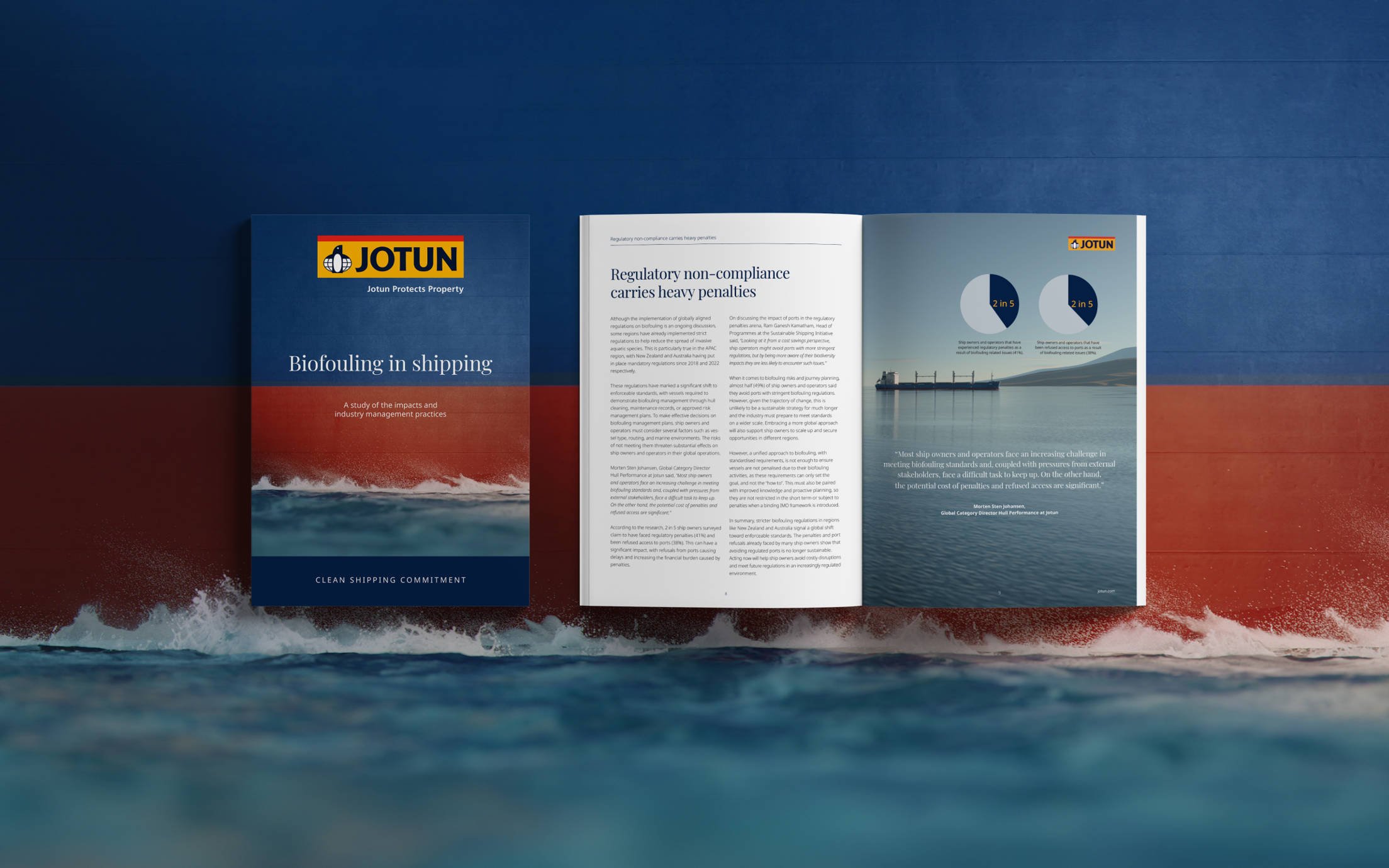Shipping is recognised as the most environmentally friendly way to transport large volumes of goods around the globe. Even so it is increasingly regulated with a view to reducing emissions of greenhouse gases particularly CO₂. That is why the IMO is bringing in new regulations in 2023 aimed at making the entire world fleet more efficient and less polluting.
How effective the new EEXI and CII rules will be in making ships more efficient and less polluting remains to be seen but the topic has been high on the agenda across the industry and in boardrooms since they were first announced in 2020.
Hull fouling – a major economic and environmental challenge
Fresh from the builder’s yard or after a scheduled drydocking, a ship’s hull should be at its cleanest and most efficient. Thereafter, the hull will inevitably become fouled causing the ship to slow down and to burn more fuel. The fouling will also be the main means for invasive species to be transported around the globe with the potential to devastate fragile ecosystems.
The rate at which fouling occurs depends upon many things: the quality of the hull coating, operation in fouling hot spots, prolonged idling and an operational profile at odds with that the coating was intended for. Most ships are obliged to drydock twice every five years, and this is when the antifouling coating is either replaced or, if a premium product with a longer lifetime, cleaned and retouched where necessary.
With cleanliness and efficiency restored the ship once again becomes more economic to run and less of an environmental hazard. A growing number of ship operators are also discovering the benefits of hull cleaning whilst the ship is in service between drydockings.
Alternative cleaning methods to cure the problem
In service cleaning as such is most definitely not a new development. Ships which became badly fouled either because of idling or lay-up or because of damage sustained by the coating in a collision, grounding or contact with ice, debris or some other underwater obstruction, have often needed to resort to reactive hull cleaning services to cure the problem.
Most reactive cleaning was initially done by divers using manual tools and abrasives although today brush carts and ROVs have been developed which can do the task quicker. Although the obvious fouling was removed, so too was much of the underlying antifouling coating. As a result of the compromised antifouling properties of the coating, subsequent fouling was usually accelerated and more aggressive.
In times when the issue of invasive species was not considered a problem and even in some places still today, removal of the fouling was the main consideration and collection and disposal of the removed biofouling not particularly concerning. Because of that it is likely that species transfer was almost certain to happen. But that lax approach is thankfully being consigned to history and modern cleaning practices are much more in tune with current thinking on protecting the environment. Today’s cleaning tools often have a means of collecting the removed fouling allowing safe disposal ashore.
New proactive cleaning approach
What is new is the concept of proactive cleaning aimed at keeping the hull clean and efficient at all times. An analogy for this new approach is the benefit of regular daily tooth brushing regime as opposed to an irregular visit to a dental hygienist for intensive scale and plaque removal and polishing.
It is possible to do this proactive cleaning or ‘grooming’ as some prefer to call it using similar tools as those for reactive cleaning but there is the added element of monitoring fouling at very regular intervals or even continuously. This allows for carrying out preventative cleaning whilst fouling is at a very early stage and before any hard fouling has had a chance to occur.
Fouling always begins with a layer of bacterial slime referred to as microfouling and it is this that provides the base for macrofouling when animals and plants attach to the hull. Removing fouling at this very early stage eliminates the need for aggressive cleaning allowing for the very gentlest of touches.
Reducing risk, maximising benefits
The risk of damaging the anti-fouling is virtually eliminated allowing the coating to perform as intended for the remainder of its nominal lifespan thus maximising the benefit expected of premium coatings and the additional capital outlay by the shipowner. More importantly, cleaning off the microfouling requires no collection of waste as there are no invasive organisms to remove.
The monitoring process can be carried out using divers, or as in the case of some systems such as Jotun’s HullSkater, with robotic devices that are retained onboard a vessel for deployment at any suitable opportunity. Because of the need for regular inspections – at least monthly – relying on outside contractors is only really a possibility for ships operating on scheduled services where the necessary arrangements can be made with a degree of certainty. Using onboard equipment allows the monitoring process and the proactive approach to be used by all vessels especially those in the spot market which generally are considered to be more at risk from fouling.




